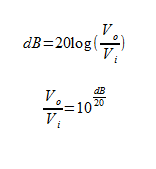Introduction to Operational Amplifiers with LTSpice
Feedback with Amplifiers
Op amps are not meant to be used as stand-alone devices. We simply verified the Vout equation in the ideal op amp video to show why it is commonly referred to as a voltage-controlled voltage source. We are going to talk about feedback and closed-loop gain and application. What is feedback? Feedback occurs when the output of a system is fed back into as input(s). There are two types of feedback: positive (regenerative) and negative (degenerative). Feedback is applied to the system to affect one or more of the following properties:
- Desensitize the gain - the value of the gain becomes less sensitive to variations in the values of the circuit component, such as temperature effects on transistors.
- Reduce non-linear distortion - the output is proportional to the input.
- Reduce the effect of noise - reduces the amount of unwanted electrical interference on the output. This interference could be external or from the circuit components themselves.
- Control the input and output resistances - with an appropriate feedback configuration the input and output resistances can be controlled.
- Extend the bandwidth of the amplifier. We need to be aware of the Gain-Bandwidth Product here. You can extend the bandwidth (to a certain degree) but at the cost of the gain. Gain Bandwidth Product is constant and describes the op amp gain behavior with respect to frequency.
Quick Note about Units
When were talking about gain, we are taking the ratio of the output to the input. If both output and input are expressed in terms of voltage then the units will be Volt/Volt. In the .ac analysis the gain is given in terms of decibels. Here's the conversion formula.
All of the feedback comes at a price, and that cost is the gain. Negative feedback trades gain for more desirable properties; increasing the input resistance also increases the bandwidth.
Closed-Loop Gain
Unlike open-loop gain, the closed-loop gain is dependent on the external circuitry because of the feedback. However, it can be generalized.



